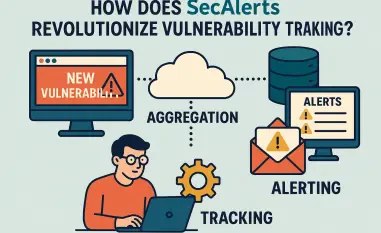I’m thrilled to sit down with Malik Haidar, a renowned cybersecurity expert whose extensive experience in protecting multinational corporations from digital threats has made him a leading voice in the field. With a deep background in analytics, intelligence, and security, Malik has a unique perspective on integrating business needs with robust cybersecurity strategies. Today, we’ll explore the critical intersection of artificial intelligence and security, delving into the importance of safeguarding AI systems, building trust in autonomous technologies, and striking the right balance between automation and human oversight.
How do you see the role of securing AI systems in enabling organizations to fully leverage AI for enhancing their security operations?
Securing AI systems is absolutely fundamental if organizations want to reap the benefits of AI in security operations. AI can transform how we handle cyber defense—think cutting through alert fatigue or spotting patterns that human analysts might miss. But without proper security, you’re just opening new doors for attackers. Unsecured AI can become a liability, amplifying risks instead of reducing them. It’s about ensuring that the technology meant to protect us doesn’t turn into a weak link. Organizations need to approach AI security with the same rigor as any critical infrastructure, focusing on trust, accountability, and oversight to make AI a true force multiplier.
What are some of the major risks organizations face if their AI systems aren’t adequately protected?
The risks are significant and multifaceted. If AI systems aren’t secured, attackers can manipulate the data feeding into these models, leading to biased or incorrect outputs—imagine a threat detection system that starts ignoring real threats. There’s also the danger of data breaches, where sensitive information used to train AI is exposed. Another big concern is adversaries exploiting AI to automate attacks at scale, like generating phishing campaigns or deepfakes. Without strong safeguards, you’re not just risking the AI system itself but potentially the entire organizational security posture.
Can you elaborate on how deploying AI in security operations expands an organization’s attack surface?
Absolutely. When you integrate AI into security operations, you’re introducing new components—models, data pipelines, APIs—that weren’t there before. Each of these becomes a potential entry point for attackers. For instance, an AI system with access to critical data or systems can be targeted for credential theft or manipulation. The more AI interacts with your environment, the more pathways there are for exploitation. It’s not just about the technology; it’s about how it connects to everything else. Without governance and visibility, you’re essentially widening the battlefield for cyber threats.
Why is establishing trust in AI systems, particularly agentic AI, so crucial for secure deployment?
Trust in AI systems, especially agentic AI, is non-negotiable because these systems often operate with a degree of autonomy. Agentic AI doesn’t just analyze data; it can take actions like triaging alerts or triggering responses without human intervention. If you can’t trust its decisions or verify its actions, you’re gambling with your security. Trust means knowing the AI is acting within defined boundaries, using reliable data, and that its actions can be traced and reversed if needed. Without this foundation, you risk deploying a tool that could do more harm than good.
How does identity security lay the groundwork for trust in AI systems?
Identity security is the bedrock of trust because every AI model or agent is essentially a new identity in your environment. Just like with human users, if you don’t control who or what has access to sensitive data or systems, you’re inviting disaster. By assigning AI agents specific identities with scoped credentials and least privilege access, you ensure they only do what they’re supposed to. Strong authentication and regular key rotation further prevent impersonation. It’s about making sure every interaction or decision by an AI can be attributed and validated, building a chain of trust from the ground up.
What makes securing agentic AI systems different from other AI tools in terms of trust and security needs?
Agentic AI systems stand out because of their ability to act independently, often making decisions or executing tasks without direct human oversight. Unlike other AI tools that might just analyze data or provide recommendations, agentic AI can directly impact your security posture by, say, blocking a network connection or escalating an alert. This autonomy demands a higher level of trust and security. You need tighter controls, more granular policies, and end-to-end auditability to ensure these systems don’t overstep or get manipulated. The stakes are simply higher when AI has the power to act on its own.
Can you share an example of what might go wrong if trust isn’t properly established in agentic AI systems?
Sure, imagine an agentic AI system deployed to manage incident response. If trust isn’t established—meaning its identity isn’t secured or its actions aren’t auditable—an attacker could compromise it to issue false commands, like shutting down critical defenses during an attack. Worse, the breach might go unnoticed because there’s no proper logging or traceability. The result could be a full-scale breach that spirals out of control, all because the AI was trusted to act without the right checks in place. It’s a stark reminder that autonomy without accountability is a recipe for disaster.
What does it mean to treat AI agents as first-class identities within an Identity and Access Management framework?
Treating AI agents as first-class identities means recognizing them as entities with the same level of importance and scrutiny as human users or services in your IAM framework. Just like you’d assign a user specific permissions and monitor their activity, you do the same for AI agents. This involves giving them unique identities, defining their access rights with least privilege principles, and ensuring their lifecycle—from creation to decommissioning—is managed. It’s about integrating AI into your security policies so there’s no ambiguity about what they can do or who’s responsible for them.
How do practices like strong authentication and key rotation help mitigate risks such as impersonation in AI systems?
Strong authentication and key rotation are critical to ensuring that only authorized AI agents can access systems or data. Authentication verifies the agent’s identity before it can act, preventing unauthorized access. Key rotation—regularly updating the cryptographic keys used for authentication—reduces the window of opportunity for attackers who might steal credentials. If an old key is compromised, it’s no longer useful after rotation. These practices make it much harder for attackers to impersonate an AI agent and misuse its privileges, locking down one of the most common attack vectors.
Why is activity provenance and audit logging so vital for actions initiated by AI systems?
Activity provenance and audit logging are essential because they provide a clear record of what an AI system did, when, and under what authority. If an AI agent takes an action—like blocking a user account or escalating an alert—you need to trace that back to understand why it happened and whether it was appropriate. Without this, you’re flying blind; you can’t validate decisions or spot malicious interference. Logging ensures accountability, helps with forensic analysis after an incident, and allows you to reverse harmful actions if needed. It’s the backbone of trust in AI operations.
Can you walk us through some best practices for securing AI systems to ensure they remain reliable and safe?
Securing AI systems requires a layered approach. Start with access controls—apply least privilege to models, datasets, and APIs, and continuously log access to catch unauthorized use. Data controls are next; validate and sanitize all inputs to prevent model poisoning and secure storage to avoid leaks. Deployment strategies like sandboxing and red-teaming help test systems in safe environments before they go live. Inference security, with input/output validation, guards against attacks like prompt injection. Monitoring for drift or anomalies ensures you spot compromise early. Finally, model security—through versioning and integrity checks—ensures authenticity. Together, these practices build a robust defense around AI systems.
How do you strike the right balance between automation and human oversight when deploying AI in security operations?
Striking the right balance means understanding what AI can handle independently and where human judgment is irreplaceable. Tasks like threat enrichment or log parsing—repetitive, data-heavy processes—are perfect for full automation because errors there are low-risk and measurable. But for complex decisions like incident scoping or response strategies, AI should augment, not replace, humans. It can surface insights or suggest actions, but practitioners need to make the final call due to the need for context and ethics. The key is categorizing workflows by error tolerance and ensuring humans stay in the loop where nuance matters most.
What is your forecast for the future of AI security as more organizations adopt these technologies?
I believe AI security will become a cornerstone of cybersecurity as adoption accelerates. We’re going to see more sophisticated attacks targeting AI systems—think advanced model poisoning or exploitation of autonomous agents. At the same time, I expect frameworks and tools for securing AI to mature rapidly, with tighter integration into existing security practices like IAM and monitoring. Organizations that prioritize AI security early will gain a competitive edge, while those that lag risk becoming cautionary tales. The future hinges on building trust and resilience into AI from the start, ensuring it’s a powerful ally rather than a hidden vulnerability.













